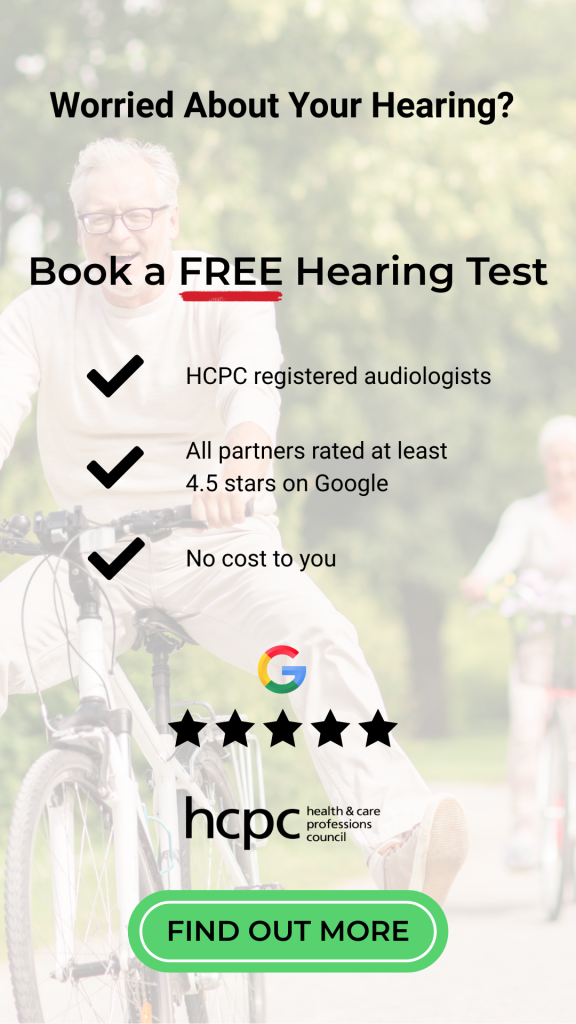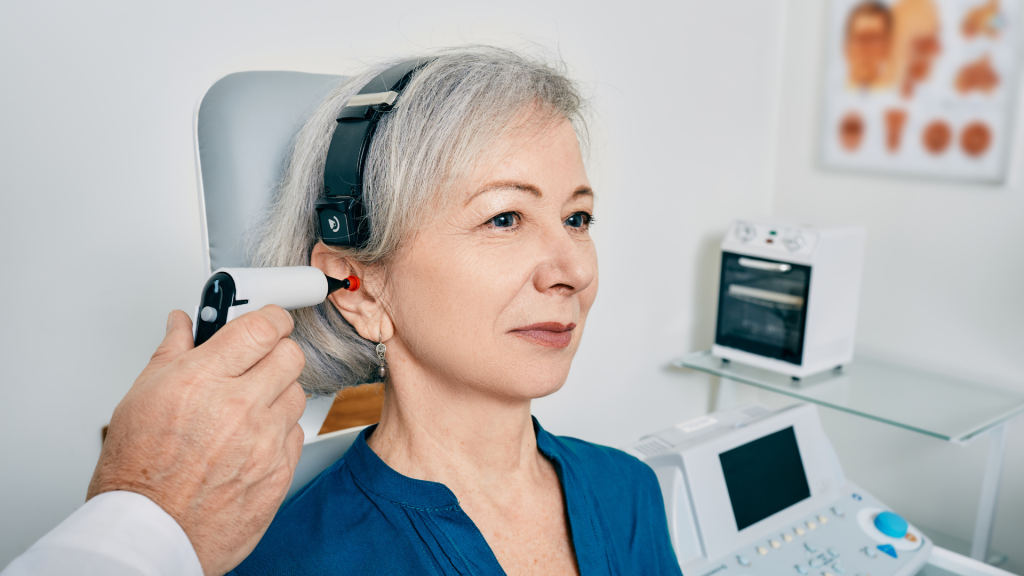Hearing loss can creep in gradually, often going unnoticed until conversations become strained or the volume on the TV keeps inching upward. For some adults—particularly those in their 30s to 50s—one possible cause is a condition called otosclerosis, a disorder that affects the bones in the middle ear. While it’s relatively common, especially among women and those with a family history, many people are unfamiliar with how it’s diagnosed.
Otosclerosis is a progressive condition, meaning it typically worsens over time. Fortunately, early detection and appropriate intervention can help manage symptoms and preserve hearing. That’s why understanding the diagnostic process is so important.
In this article, we’ll walk you through how otosclerosis is diagnosed—step by step. From recognizing the first signs to undergoing specific hearing tests and imaging studies, you’ll learn what to expect at each stage of the journey. Whether you’re dealing with symptoms yourself or supporting a loved one, this guide can help you feel more informed and prepared.
Understanding Otosclerosis
Otosclerosis is a condition that affects the bones in the middle ear, primarily the stapes, which is the smallest bone in the human body. In a healthy ear, the stapes vibrates freely to help transmit sound from the outer ear to the inner ear. In otosclerosis, abnormal bone growth around the stapes gradually causes it to become fixed, limiting its movement and impairing the transmission of sound.
What Causes Otosclerosis?
The exact cause of otosclerosis isn’t fully understood, but both genetic and environmental factors appear to play a role. If you have a family history of hearing loss, your chances of developing the condition are higher. Hormonal changes—particularly during pregnancy—may also accelerate the progression of otosclerosis in some women.
Who Is at Risk?
- Adults between the ages of 15 and 50, with most diagnoses occurring in the 30s and 40s
- Women, who are more commonly affected than men
- People with a family history of otosclerosis
- Caucasians, as the condition is more prevalent in this population
Symptoms That Suggest Otosclerosis
Most people with otosclerosis experience gradual hearing loss, particularly in one ear initially. This type of hearing loss is typically conductive, meaning it results from a problem conducting sound waves through the outer or middle ear. In some cases, it may progress to mixed hearing loss, involving both conductive and sensorineural components.
Other possible symptoms include:
- Tinnitus (ringing or buzzing in the ears)
- Difficulty hearing low-pitched sounds
- Paracusis Willisii – an odd phenomenon where speech seems clearer in noisy environments
Otosclerosis is rarely associated with pain, dizziness, or pressure, making its symptoms more subtle but nonetheless impactful over time.
Recognizing the Symptoms That Lead to Testing
The journey toward diagnosing otosclerosis often begins with subtle but persistent changes in hearing. Unlike sudden hearing loss, otosclerosis tends to develop gradually, which can make it easy to overlook in its early stages. However, paying attention to these early warning signs is key to seeking timely medical evaluation.
Common Symptoms to Watch For
- Gradual Hearing Loss: This is the hallmark symptom of otosclerosis. It typically starts in one ear and may later affect both. Many people first notice difficulty hearing soft or low-pitched sounds, such as whispers or the hum of a refrigerator.
- Tinnitus: A constant or intermittent ringing, buzzing, or humming in the affected ear. While not unique to otosclerosis, tinnitus often accompanies hearing loss caused by the condition.
- Better Hearing in Noisy Environments: Known as Paracusis Willisii, this unusual phenomenon can make speech seem clearer in crowded settings—a possible clue pointing to conductive hearing loss.
- Worsening Hearing During Pregnancy: In women, otosclerosis may progress more rapidly due to hormonal changes during pregnancy.
When to See a Doctor
If you notice any of these symptoms—especially if hearing loss is persistent or worsening—it’s important to consult a healthcare provider, typically an audiologist or ENT (ear, nose, and throat) specialist. Early evaluation helps rule out other causes of hearing loss and opens the door to effective treatment options.
You should consider getting tested if:
- Your hearing loss seems one-sided or progressively worse
- You’re turning up the volume on devices more than usual
- People often tell you you’re not hearing them clearly
- You have a family history of hearing loss or otosclerosis
Hearing Tests and Audiological Evaluation
After you’ve reported hearing concerns to your provider, the next step in diagnosing otosclerosis is a comprehensive hearing evaluation. These tests are crucial in determining not only the presence of hearing loss, but also its type and severity—key factors in identifying otosclerosis.
Pure-Tone Audiometry
This is the most common hearing test and typically the first one performed. You’ll wear headphones in a soundproof booth and listen for beeps or tones at various pitches and volumes. You signal when you hear each tone.
What it reveals:
- Conductive hearing loss, which is typical in otosclerosis, shows a gap between air conduction and bone conduction thresholds—known as an “air-bone gap.”
- Sensorineural hearing loss may also be detected in more advanced cases where inner ear involvement occurs.
Speech Recognition Tests
In this test, you’ll be asked to repeat words spoken at different volumes. This helps assess how well you understand speech, especially in noisy environments.
Why it matters:
These tests help determine the functional impact of your hearing loss and differentiate otosclerosis from other auditory conditions.
Tympanometry
This test evaluates the movement of your eardrum in response to pressure changes. In otosclerosis, the stapes bone becomes fixed, which can affect how the eardrum vibrates.
Findings in otosclerosis:
- Tympanometry may appear normal or show reduced eardrum compliance. It helps rule out other conditions like fluid in the middle ear or Eustachian tube dysfunction.
Acoustic Reflex Testing
This test checks the reflexive response of the middle ear muscles to loud sounds. In otosclerosis, the stapes fixation often prevents the reflex from occurring.
Result:
Absent or elevated acoustic reflex thresholds in the affected ear can support a diagnosis of otosclerosis.
Confirming the Diagnosis with Imaging and Specialist Exams
Once hearing tests point toward conductive hearing loss suggestive of otosclerosis, your provider may recommend additional tests to confirm the diagnosis. These often involve advanced imaging and a consultation with a specialist, usually an otolaryngologist (ENT).
High-Resolution CT Scan
A CT (computed tomography) scan of the temporal bone is the most definitive imaging tool for diagnosing otosclerosis. It provides detailed images of the middle and inner ear structures, allowing your doctor to see any abnormal bone growth.
What it can reveal:
- Fixation of the stapes bone
- Abnormal bone formation around the oval window or cochlea
- Advanced otosclerosis affecting inner ear structures (cochlear otosclerosis)
CT scans are particularly helpful in differentiating otosclerosis from other middle ear conditions like congenital ossicular abnormalities or chronic otitis media.
ENT Specialist Evaluation
An ENT doctor will review your hearing tests and imaging results, perform a physical exam using an otoscope, and take a detailed medical history. While the eardrum often appears normal in otosclerosis, the ENT may check for subtle signs or ask about your family history and any changes during pregnancy (if applicable).
Additional tools they may use:
- Tuning fork tests (Weber and Rinne tests) to assess air vs. bone conduction
- Discussion of how your symptoms align with common otosclerosis patterns
Ruling Out Other Conditions
It’s important to confirm the diagnosis because other ear disorders can mimic otosclerosis, such as:
- Middle ear infections with fluid (otitis media with effusion)
- Eustachian tube dysfunction
- Ossicular chain discontinuity
Imaging and specialist evaluations help ensure that otosclerosis is correctly identified and that you receive appropriate treatment options.
What to Expect After Diagnosis
Receiving a diagnosis of otosclerosis can feel overwhelming, but it’s also the beginning of a path toward better hearing. With a confirmed diagnosis, you and your healthcare provider can explore a range of treatment options tailored to your needs, lifestyle, and the severity of your condition.
Non-Surgical Management: Hearing Aids
For many people with mild to moderate otosclerosis, hearing aids are the first and most effective step. These devices amplify sound, making it easier to hear conversations and everyday noises without addressing the bone abnormality directly.
Advantages:
- Non-invasive
- Adjustable over time
- Can be fitted quickly and easily
Ideal for:
People who aren’t ready for surgery or who have medical reasons to avoid it.
Surgical Treatment: Stapedectomy or Stapedotomy
If hearing aids are not enough—or if you prefer a more permanent solution—surgery may be recommended. The most common procedure is a stapedectomy or stapedotomy, where part or all of the immobilized stapes bone is replaced with a tiny prosthesis to restore sound conduction.
Success rate:
Roughly 90–95% of patients experience significant improvement in hearing after surgery.
Risks include:
- Infection
- Taste disturbance
- Rare chance of worsening hearing
A careful discussion with your ENT surgeon will help determine if surgery is right for you.
Monitoring and Regular Checkups
If your hearing loss is minimal or stable, your doctor may suggest a watchful waiting approach with regular audiological evaluations to monitor any progression. This is often recommended in early or mild cases where intervention might not yet be necessary.
What follow-up includes:
- Repeat hearing tests every 6–12 months
- Updates to hearing aid settings (if used)
- Ongoing evaluation of any new symptoms
Managing Expectations
It’s important to understand that while treatments can greatly improve hearing, they don’t cure otosclerosis or stop its progression completely. Ongoing follow-up and care are key to maintaining hearing health.
Once diagnosed, many people feel relief simply knowing the cause of their symptoms—and that help is available.
Conclusion
Otosclerosis may be a silent, progressive condition, but with the right approach, it doesn’t have to take you by surprise. Understanding how it’s diagnosed—from the first signs of hearing loss to detailed hearing tests and advanced imaging—can empower you or a loved one to take timely action. Early detection plays a crucial role in preserving hearing and quality of life.
Whether you’re dealing with occasional tinnitus, noticing a gradual decline in hearing, or suspecting a hereditary link, don’t wait to speak with a healthcare provider. The diagnostic process is straightforward, non-invasive, and highly effective at pinpointing the cause of symptoms. And once diagnosed, you have options—ranging from hearing aids to surgical solutions—that can help restore sound clarity and communication confidence.
Hearing plays a vital role in staying connected to the world around you. If you suspect otosclerosis, taking the first step toward diagnosis could lead to better hearing and a better quality of life.
FAQ
What is the first sign of otosclerosis?
The most common early sign of otosclerosis is gradual hearing loss, typically in one ear at first. People often notice difficulty hearing low-pitched sounds or need to increase the volume on devices. Tinnitus (ringing in the ears) may also accompany early stages.
How is otosclerosis different from other causes of hearing loss?
Otosclerosis causes conductive hearing loss due to abnormal bone growth in the middle ear, which prevents sound from traveling efficiently to the inner ear. This differs from sensorineural hearing loss, which results from damage to the inner ear or auditory nerve.
Can otosclerosis be seen during a physical exam?
Not directly. The eardrum typically appears normal, so visual inspection with an otoscope may not detect otosclerosis. Diagnosis relies on hearing tests, imaging (like a CT scan), and specialist evaluation to confirm.
Is a CT scan always needed to diagnose otosclerosis?
Not always, but it is helpful in confirming the diagnosis and ruling out other middle ear disorders. In some cases, audiological findings and clinical history are sufficient for diagnosis, especially if surgery is being considered.
Can otosclerosis be cured?
While otosclerosis cannot be cured, its symptoms—particularly hearing loss—can be effectively managed. Treatments include hearing aids and surgical procedures like stapedectomy, which can restore much of the lost hearing in many cases.
Disclaimer
This article is for informational purposes only and is not a substitute for professional medical advice, diagnosis, or treatment. If you are concerned about your hearing or ear health, please consult a qualified healthcare provider.






